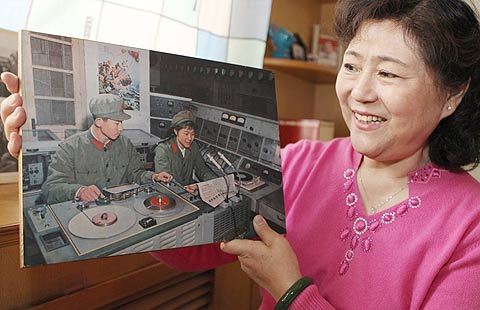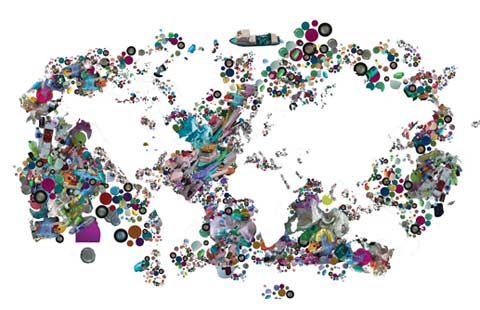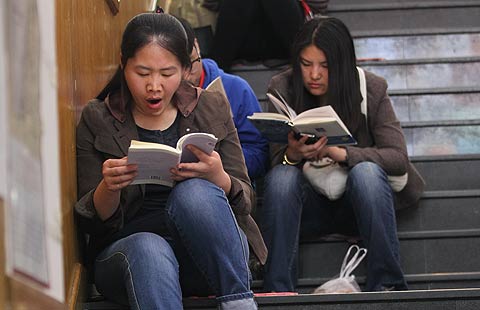Growth still within reasonable range
Updated: 2014-04-25 07:29
By Zuo Xiaolei (China Daily Europe)
|
|||||||||||
It would be wrong to interpret economic figures in the first quarter as an indication of crisis
Anyone "looking for a crisis" will interpret China's lackluster economic figures for the first quarter, such as its 7.4 percent growth in GDP, decline in exports and a slump in the producer price index, as signs of the further worsening of its economic conditions and an excuse for a new round of stimulus measures.
However, five years after the outbreak of the global financial crisis, an objective judgment of China's current economic situation based on the economic data first needs to realize that short-term figures herald different economic trends at different times. If China's just unveiled first-quarter economic data signal ongoing economic deterioration, they would justify the adoption of some stimulus policies. However, if they are merely normal and regular economic fluctuations during a period of structural transition, then they should not be interpreted as signifying a crisis. Any large-scale stimulus packages adopted at this time would sabotage the normal trajectory of the country's economic development, as it is not a time of crisis.
Anyone looking at China's first-quarter economic figures with a "crisis mentality" will no doubt jump to the conclusion that the world's second-largest economy is stalling and runs the risk of a hard landing. Such a judgment will defend the shift to an easy monetary policy, such as to lower banks' deposit reserve ratio, and further misjudgments may be encouraged. Only with a non-crisis perspective, can one make the objective and accurate judgment that China's economy is entering a new stage of steady growth.

Owing to the changes in the economic pattern at home and abroad, especially the change in China's long-held comparative advantage in labor, the conditions for China's high-speed economic growth over the past decades have fundamentally changed and its economic growth will slow from the breakneck speed of previous decades to the 7-8 percent range. This moderately slow economic growth is normal and reasonable and shows the economy's intrinsic stability. After decades of high-paced growth, a 7-8 percent growth rate is the inherent range for China's economic growth in the new situation, which can be seen from the 7.6 percent growth of 2012 and the 7.7 percent economic growth of last year. Therefore, the 7.4 percent growth in the first quarter is within the range that is reasonable for the economy and there is no possibility of a drastic economic slowdown or a hard landing.
The growth in the country's producer price index did fall by 2.3 percent in March from a year earlier and by 0.6 percent from February, but these should not be perceived as signs of a sharp economic downturn. The gloomy trend in the index is, to a large extent, related to the overcapacity of such upstream industries as steel, cement and glass, and its negative growth is normal before the overcapacity is eliminated in these sectors. But the negative growth index does highlight the urgent need for China to push forward industrial structural adjustments and eliminate overcapacity in these industries. Soft bulk commodity prices in recent months have also served as another cause for the fall in China's PPI.
China suffered a 6.6 percent year-on-year decline in exports during March, and they were down 3.4 percent from the previous month. But these are a result of some seasonal factors and the fact that they already account for a sizeable proportion of the world's total trade value. There is little potential for further expansion until there is a large-scale expansion in the world's trade aggregate. At the same time, the transfer of some processing-trade enterprises from China to other countries with cheaper labor has inevitably caused a decline in export orders and therefore production in China. As such outbound industrial transfer continues, China will suffer an irreversible trade deficit in the years to come if it fails to make industrial structural adjustments.
China's consumer price index grew by 2.3 percent year-on-year in the first quarter, but declined by 0.32 percent from the previous three-month period. The generally steady consumer price index contains no sign of deflation as some have claimed. Some analysts believe that a CPI below 3.5 percent will leave space for the enforcement of a loose monetary policy, and reinforce market expectations for banks' deposit reserve ratio to be lowered. But the assertion that a slowed rise in the CPI should be followed by an easier monetary policy reflects a lack of understanding about monetary policy. As an important regulatory tool, a country's monetary policy will be tightened if its economy appears overheated and stays at a high level of inflation.
On the contrary, a loose monetary policy should be maintained, such as through interest rate cuts, to create employment if the country's economy suffers a big downturn and its unemployment rate keeps soaring.
The lack of any sign of overheating or recession in China's economy means there is no need for excessive intervention into its economic activities through monetary policy adjustments. The country should maintain a sound and steady monetary policy since its economic growth is within a steadily growing range.
The author is chief economist with Beijing-based Galaxy Securities. The views do not necessarily reflect those of China Daily.
(China Daily European Weekly 04/25/2014 page18)
Today's Top News
EU: No armed intervention in Ukraine
Chinese premier visits Nigeria
Court to rule on Yingluck in Thailand
Travellers to Malaysia drop
Chinese to US grad schools drop
Ukraine moves special forces to Odessa
Slovenian PM resigns
Disclosure of military secrets becoming bigger risk
Hot Topics
Lunar probe , China growth forecasts, Emission rules get tougher, China seen through 'colored lens', International board,
Editor's Picks

|

|

|

|

|

|





